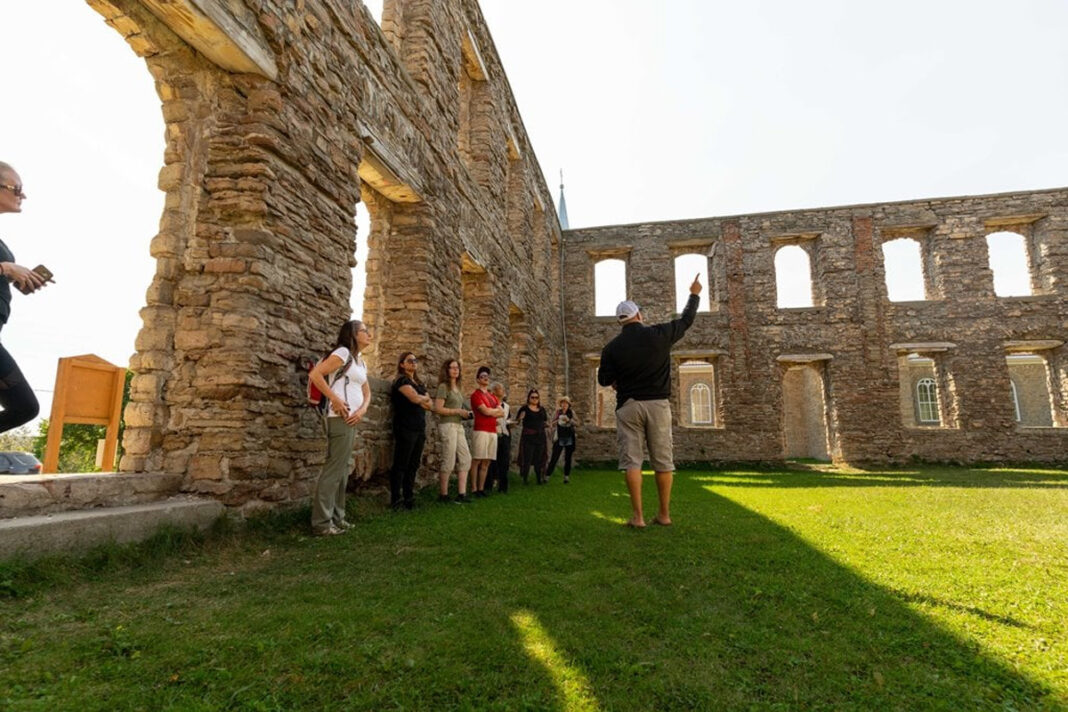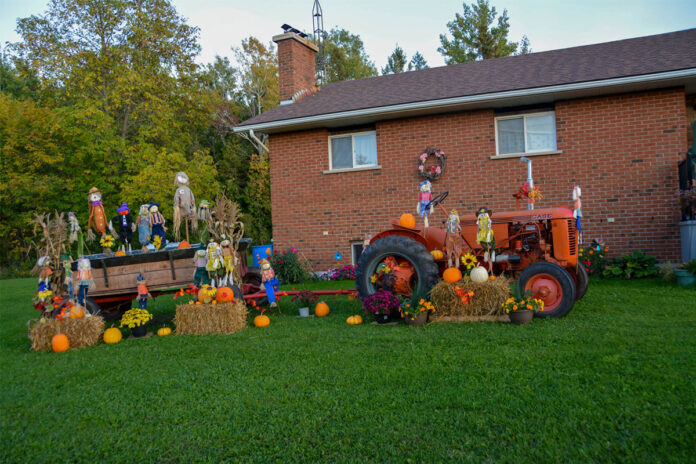To be located at Holy Cross Mission ruins
WIIKWEMKOONG—Overlooking Smith Bay, the Holy Cross Mission Ruins stand as a symbol of resilience and remembrance. Once a site of residence for resident priests, the ruins are now central to a new community effort—a monument to honour the survivors and victims of Indian Residential Schools. At a recent gathering held in Wiikwemkoong Unceded Territory, community members, leaders, and residential school survivors launched a design competition for the monument.
The event began with an opening song led by Danielle Roy, followed by a healing jingle dress dance and a ceremony. The gathering reflected a mix of grief, healing and hope, with participants uniting to remember the past and promote reconciliation.
Duke Peltier, former chief of Wiikwemkoong Unceded Territory, served as emcee. He shared his personal connection to the legacy of residential schools, recounting his experience attending one of the last schools, Qu’appelle Residential School in Canada in 1994. “Although it wasn’t run by clergy anymore, the buildings still held the pain of those who came before me. The loneliness, the homesickness—it was all still there,” Mr. Peltier said.
The Holy Cross Mission is connected to the Spanish Residential Schools, notorious for their role in the forced assimilation of Indigenous children. Between 1913 and 1958, thousands of children were taken from their families and sent to these institutions, where they were stripped of their languages and culture. Many left with deep psychological scars, and the effects of that trauma are still felt across generations.
“These schools were meant to take away our culture,” Mr. Peltier continued. “But today, we’re taking it back.”
A key part of this reclamation is the monument design competition. Open to all artists, the contest invites designs in any medium—sculpture, installation, or otherwise—that reflect the resilience of survivors and the importance of remembering their experiences. The winning artist will receive a $3,000 prize, and the monument will be installed at a site yet to be determined.
“This monument isn’t just about the past,” Mr. Peltier explained. “It’s about honoring survivors and ensuring future generations never forget what happened. It’s about resilience and hope.”
Tracy Cleland led a jingle dress ceremony, a traditional healing dance in Anishinaabe culture. The rhythmic sound of the jingle dress filled the air, offering spiritual and physical healing for those present. The event was a reminder that while the trauma of residential schools lingers, Indigenous communities are reclaiming their traditions and finding strength in their cultural practices.
Mr. Peltier reflected on early efforts of reconciliation, such as the visit from Pope John Paul II in 1984 to Midland. This event initiated a long and challenging dialogue between Indigenous communities and the Catholic Church regarding its role in the residential school system. More recently, Mr. Peltier himself was part of a delegation that met with Pope Francis in Quebec, advocating for true reconciliation, including the use of Indigenous languages in Catholic ceremonies.
As the event closed, he encouraged attendees to participate in the monument design competition, which will be announced on social media. “This is an opportunity for artists to create something lasting, a reminder not just of what we lost, but of what we’ve regained.”
The residential school system may have officially ended in 1996, but its effects endure. The Holy Cross Mission Ruins, once a place of sorrow, are now being transformed into a site of healing, unity, and remembrance. Through the monument, the community seeks to honour survivors and ensure their stories are never forgotten.
As the sun reached mid sky shining on the ruins, Mr. Peltier’s final words echoed through the gathering: “We must remember, but we must also move forward. For our children, for their future, and for the strength of our people.”






